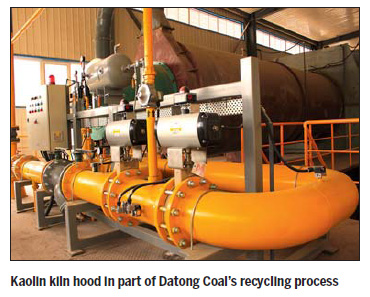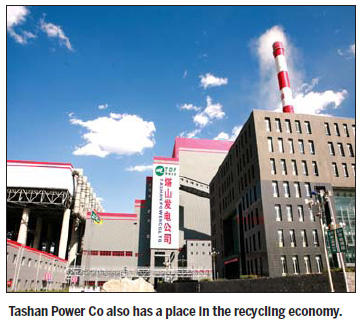Energy
Datong Coal prepares to expand its industrial chain
By Te Kan (China Daily)
Updated: 2010-11-17 16:44
 |
Large Medium Small |
|
 |
|
 |
Datong Coal plans to spend 2 billion yuan building the largest coal-exploration equipment production base in northern Shanxi province.
The company said its goal is to double the current figures for coal output and total assets in 2012.
Coal production and sales topped 100 million tons for four consecutive years from 2005 to 2008, and hit 122 million, in 2008.
The company wants to develop an industrial chain of "coal-power-construction materials" and "coal- chemicals".
"Green exploration is the core principle we stick to," said Wu Yongping, president of the Datong Coal Mine Group.
The green (environmentally friendly) mining concept depends on science and technology and shows the advantages of a large group in technology, professional experience, equipment and management. The scarce resources of the coal seam need to be finely and carefully mined, the company said.
When the company built the Tashan Circular Economy Park, the first of its kind in the region, it followed the fundamental principle of "reduce, recycle and reuse".
In 2009, the park had a total of 8.7 billion yuan worth of output in 2009.
It was listed in the first group of pilot recycling economy parks by the provincial government. Construction work on it started in 2003.
Several State leaders have visited Tashan, including President Hu Jintao and Vice-premier Li Keqiang.
Tashan Coal Mine, which was expected to turn out 15 million tons annually, went into operation at the end of 2008.
The group owns 54 coal mines in Shanxi and the Inner Mongolia autonomous region, covering a total area that is 300 kilometers east to west, and 600 kilometers north to south.
Since 2005, the annual output has been hundreds of millions of tons for six consecutive years, compared to a mere 80,000 tons annually in the initial stages.
The high-quality coal it produces has been exported to Japan, South Korea, India and Turkey.
To consolidate its place in the coal industry, Datong Coal plans to open six shafts with an annual output of 10 million tons.
It has turned itself into an energy conglomerate, with a core business of coal, power, chemicals, coal machinery, construction materials, and logistics.
The Datong Coal Mine Group goes back to 1949, the year of New China's birth, and it has produced a cumulative total of 1.8 billion tons of coal over the past 60 years.
It has paid a total of 41.3 billion yuan in taxes, making it the No 1 taxpayer of all of China's coal companies.
It has 200,000 employees, and 75 billion yuan in total assets.
The 10 park projects are a coal mine, eight plants, and one railway. The Tashan coal Mine will have an annual output of 15 million tons; the coal preparation plant will have an annual output of 15 million tons; the pit-mouth power plant will have an annual generating capacity of 1,200 megawatt; the power plant for the comprehensive utilization of resources will have an annual generating capacity of 220 mW; there is a methanol plant with an annual capacity of 1.2 million tons; a plant with an annual output of 240 million bricks of coal rubble; a plant that produces 50,000 tons of kaolin a year; a dry cement clinker production line with a daily production of 4,500 tons; a sewage treatment plant which handles 4,000 cubic meters of sewage daily; and the railway which is used for transport around the park.



